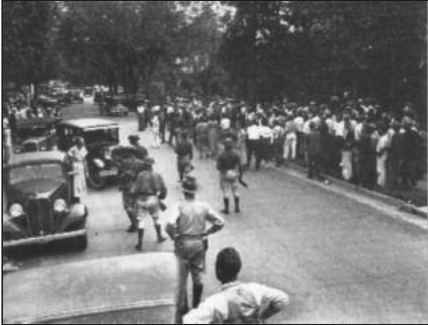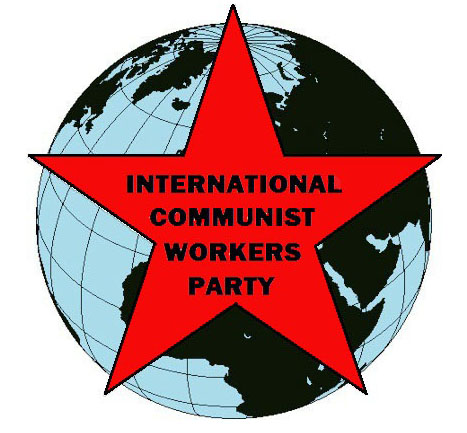 1929 Textile Strike, Gastonia, North Carolina 1929 Textile Strike, Gastonia, North Carolina The heroic Bangladeshi garment workers’ struggle has sharpened the question of trade unions: Will unions “rein in the bosses’ greed” as we hear from liberal organizations and the bosses’ press? Or do unions rein in workers’ anger, diverting it from the struggle against wage slavery?
Textile is garment’s sister industry. In the US South during and after World War I, as in Bangladesh today, textile production grew in tandem with clothing fabrication. Then, as now, the bosses went searching for cheaper labor. They moved hundreds of thousands of textile jobs to the U S South, where brutal racism kept (and still keeps) wages low. They trained new workers just off the farms.
Never satisfied, the bosses forced these new factory hands to run more and more looms apiece in a hated practice called the “stretch-out.” Then,
of young textile workers sped through the back roads of the American South in what became known as “Flying Squadrons,” spreading the walkout to any mill that dared stay open.
As in Bangladesh, the bosses responded with State violence. Local cops and the National Guard ended up murdering 14 strikers. But the bosses’ violence couldn’t defeat the strikers. Roosevelt and his “New Deal” for labor did.
Roosevelt asked the textile workers to call off the threeweek strike. He asked the manufacturers to take back the
1929 Gastonia, North Carolina, Textile Strike
in 1929, the global crisis of overproduction hit. Sound familiar?
Southern workers in the United Textile Workers (UTW) union began wildcatting in the summer of 1934. UTW president Thomas McMahon and his leadership team tried to isolate them.
McMahon spent most of his time hobnobbing with the labor cabinet honchoes in the Roosevelt administration. Roosevelt’s “New Deal” included giving unions a clear place in the legal framework of the nation.
Unfortunately for McMahon, the textile wildcatters grew in numbers. By the time the UTW held its convention in the fall, there was no stopping them. The UTW leadership was unable to keep the strike from spreading.
In September of ’34, 470,000 textile workers hit the bricks from Maine to Alabama in the largest general strike in U.S. history. Truckloads
strikers “without discrimination.” The hated “stretch-out” was to be “studied”—to death! The UTW national executive council jumped for the deal despite hundreds of telegrams from locals demanding rejection.
The Textile Labor Relations Board (TLRB) was set up as part of the new “pro-union” legal framework to insure that strikers got their jobs back. Of course, manufacturers refused to give the strikers back their jobs.
As many as 100,000—mostly in the South— never worked in the mills again. Some workers described how the mills had been turned into armed camps with machine gun nests preventing strikers from even applying for their old positions.
Tens of thousands complained to the TLRB. It issued whitewashed reports on the progress of these complaints.
Headlines in the New York Times announced the results of the study: “Finds Few [Employers] Violate the Cotton Code … Charges Dismissed as Work of Cranks or Misinformed Employees” What happened in the U.S. textile industry during the Great Depression was no accident of history. That was the only outcome possible when
trade-unionist ideology held sway.
The fourteen workers killed during the general textile strike of 1934, along with the thousands recently killed in Bangladesh, make the argument for communist revolution even more compelling.
The brave young workers who sped through the back roads of the American South to build a strike 470,000 strong are the forerunners of the hundreds of thousands battling the Bangladeshi bosses and the worldwide capitalist production system. Communist production for need, not profit, is the only solution.
|

